Clam Shell Exercise for Hips | Banded Clamshells for Abductor Activation
The clam shell exercise, is a simple yet profoundly effective lower body movement that I include frequently for my online fitness coaching clients. I love it’s ability to target and strengthen the hips, particularly the abductor muscles. This exercise, which mimic the opening and closing of a clamshell, hence the name ‘clam shell exercise; not only serves as a cornerstone for hip stability and mobility but also plays a crucial role in the overall kinetic chain functioning of the body.
When performed with a resistance band, banded clamshells intensify the activation of the hip abductors, further enhancing muscle endurance and strength. Rooted in scientific principles, the clam shell exercise, especially its banded variation, offers a plethora of benefits ranging from injury prevention to improved performance in daily activities and sports. This article delves into the science behind the clam shell exercise, shedding light on its mechanics, benefits, and how it can be a pivotal addition to your fitness routine for robust hip health and abductor activation.
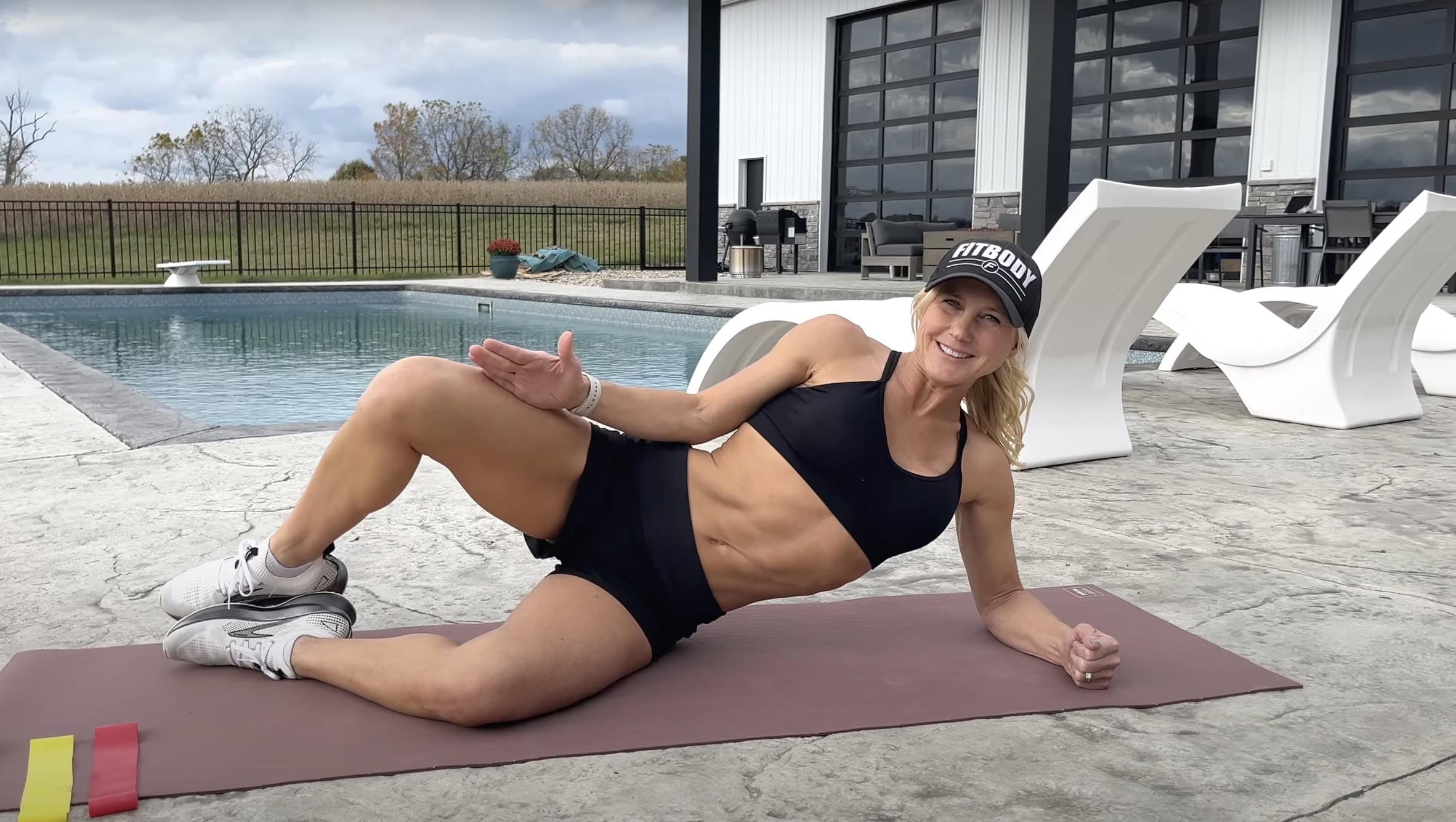
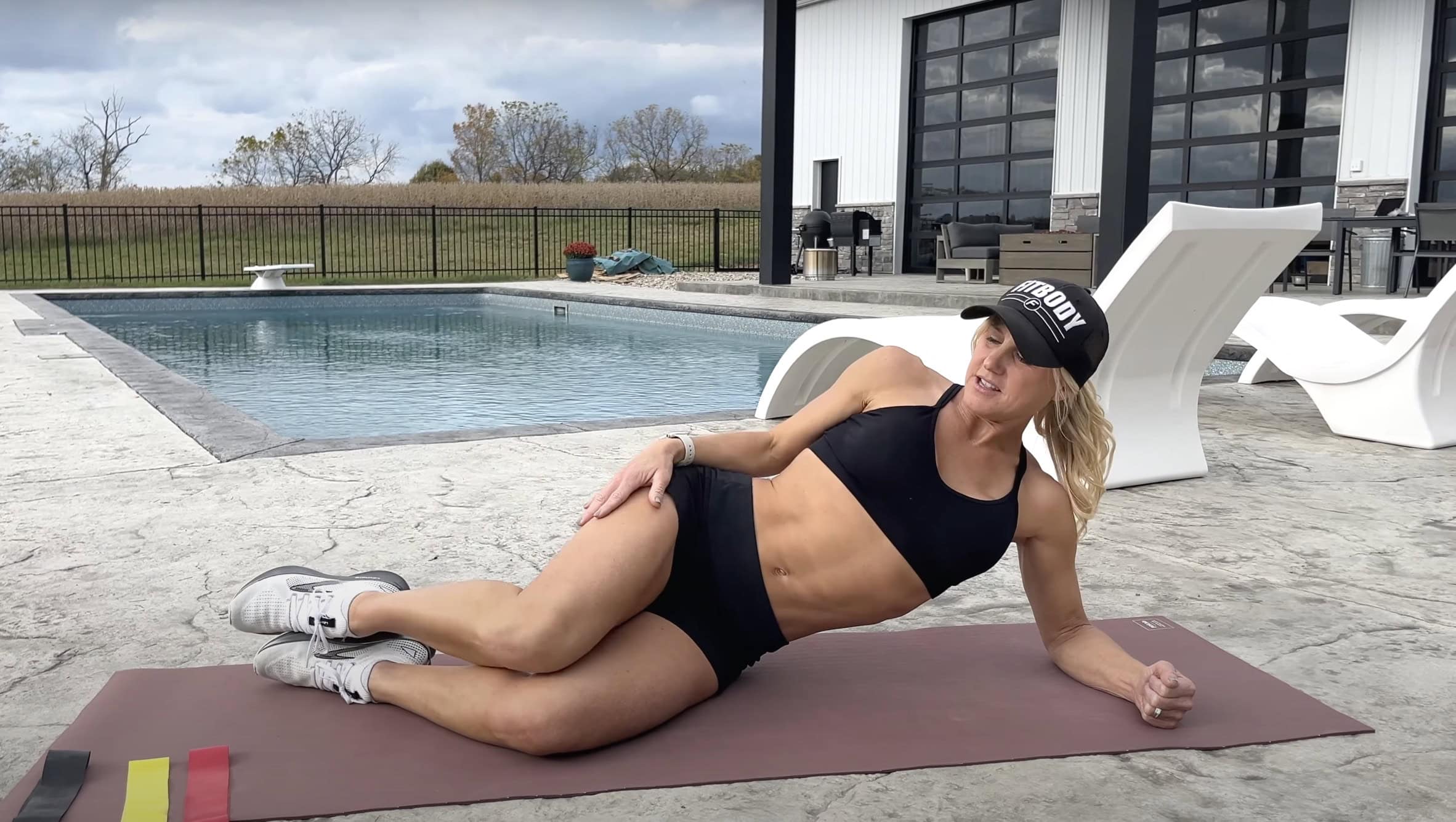
How to Perform the Clam Shell Exercise Correctly
The clam shell exercise is a powerhouse movement for strengthening the hip abductors, particularly the gluteus medius, which plays a pivotal role in hip stabilization and mobility. Perfecting the form of this exercise is crucial for reaping its benefits while minimizing the risk of injury. Follow this detailed guide to ensure you’re performing the clam shell exercise correctly, whether you’re a beginner or looking to add more challenge to your routine.
Step-by-Step Guide to the Clam Shell Exercise
- Find the Right Position: Begin by lying on your side with hips and knees stacked and bent at a 45-degree angle. Rest your head on your lower arm, and place your other hand on your hip to ensure it doesn’t roll backward.
- Engage Your Core: Before initiating the movement, engage your core muscles to stabilize your spine and pelvis.
- Initiate the Movement: Keeping your feet together, raise your upper knee as high as you can without shifting your hips or pelvis. Imagine your legs are the clamshell opening.
- Hold and Lower: Pause at the top for a moment, then slowly lower your knee back to the starting position. This counts as one repetition.
- Repeat and Switch Sides: Perform 10-15 repetitions on one side before switching to the other side. Aim for two to three sets on each side.
Common Mistakes to Avoid With the Clamshell Exercise
- Rolling the Hips: Avoid letting your top hip roll backward during the movement. This reduces the effectiveness of the exercise.
- Lifting Too High: Only raise your knee as far as you can while keeping your hips stable. Overlifting can lead to strain.
- Rushing Through Repetitions: Perform each repetition slowly and with control to maximize muscle activation and benefits.
- Improper Band Placement: To avoid strain on the knees, if you are adding resistance to make this movement more challenging, be sure the band is placed just above the knee joint and select a band that is the appropriate resistance for your fitness level.
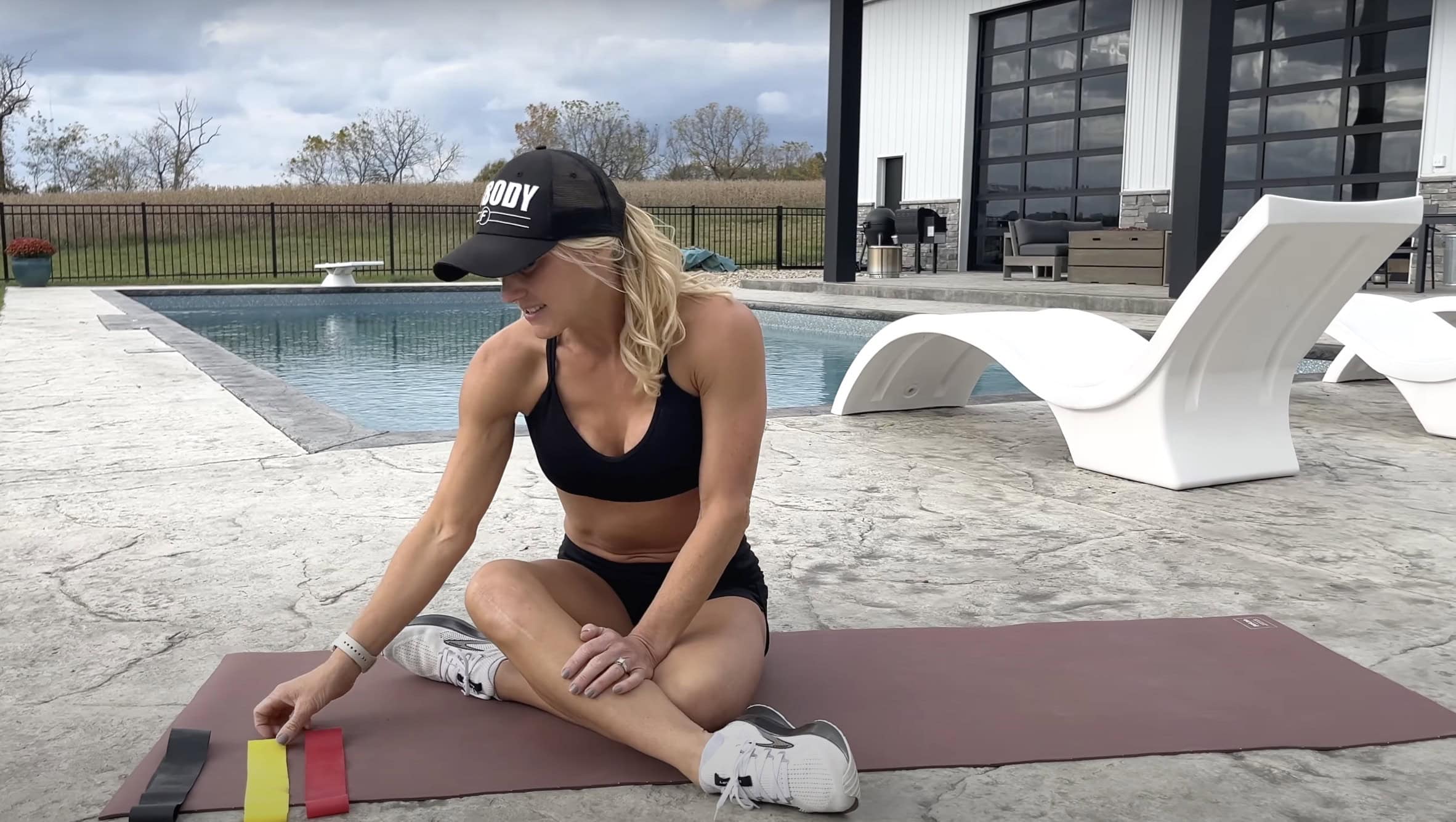
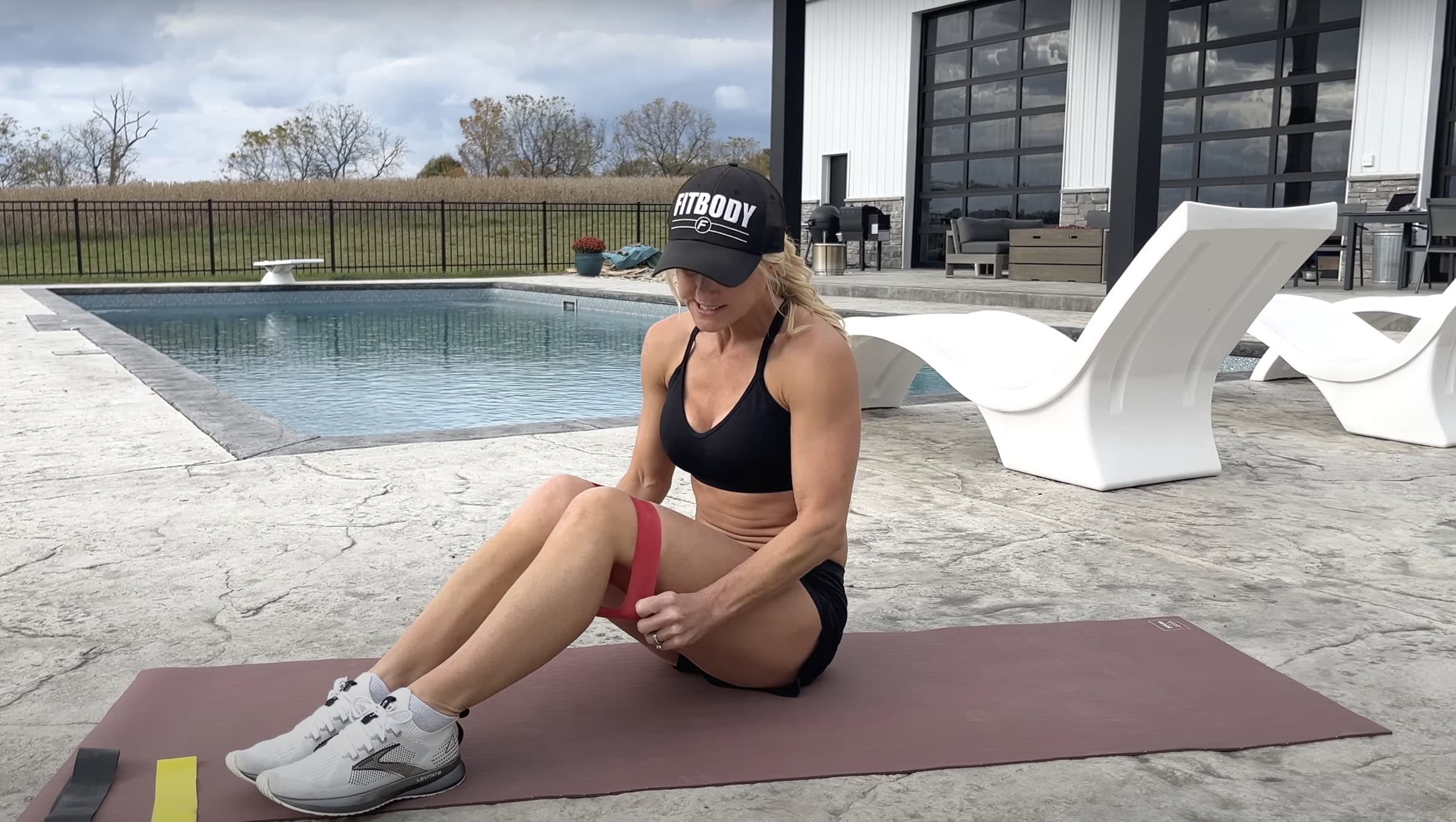
Modifications for Beginners and Advanced Individuals
- For Beginners: If you find the clamshell exercise challenging, start without a resistance band and focus on mastering the form. You can also reduce the range of motion until your strength improves.
- For Advanced Individuals: To increase the challenge, add a resistance band around your thighs, just above your knees or add a weight like a dumbbell to that region. This will further activate your hip abductors. You can also increase the number of repetitions and sets as your strength improves.
Banded Clamshell Exercise

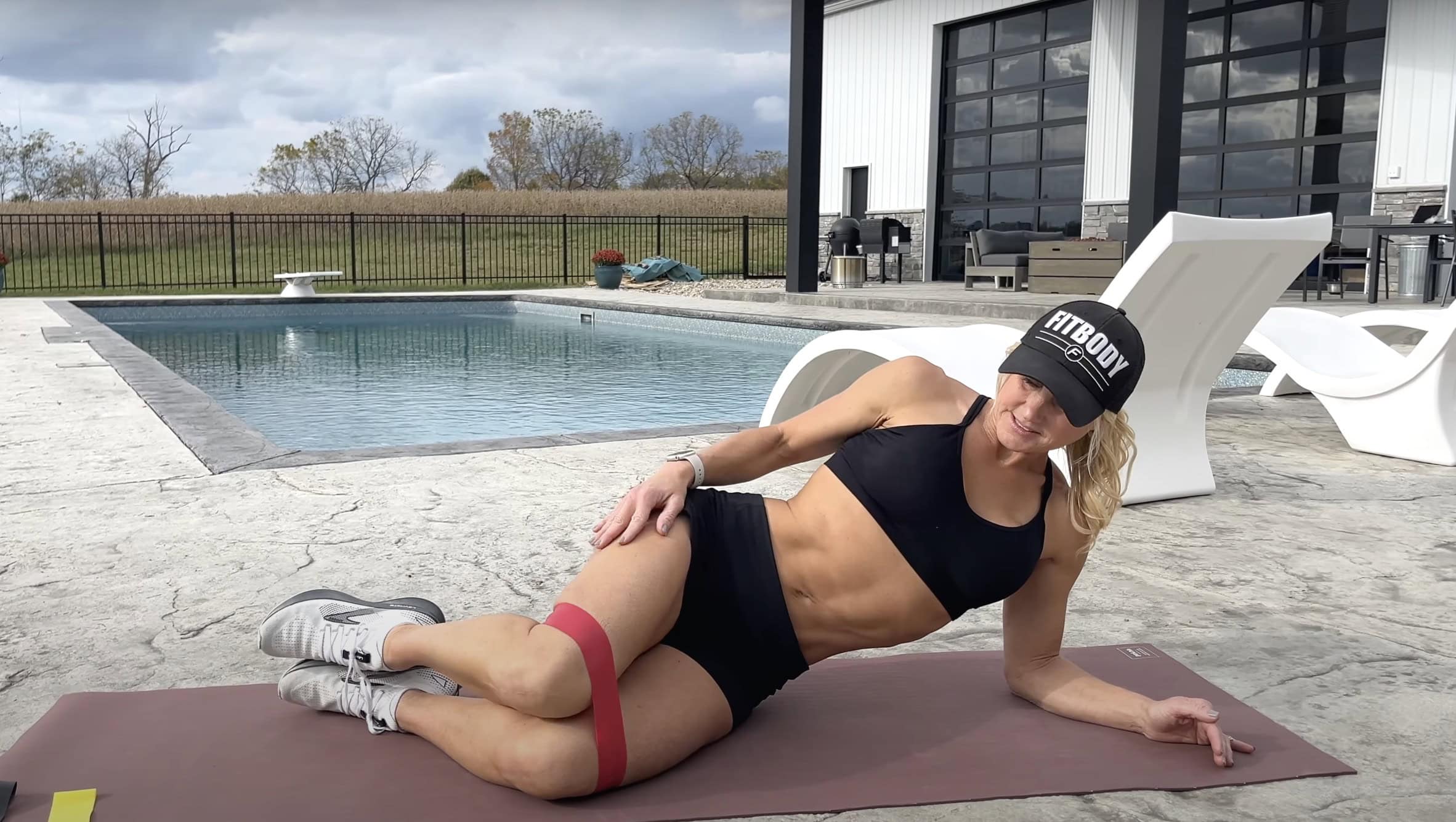
Scientific Basis of the Clam Shell Exercise: Strengthening Hips and Stabilizing the Pelvis
The clam shell exercise is not just a staple in physical therapy programs and fitness routines without reason. Its effectiveness is deeply rooted in scientific principles, specifically targeting key muscle groups to optimize hip strength and pelvic stability. Understanding the muscle groups involved and the physiological benefits of the clam shell exercise can illuminate why this simple movement is so powerful in enhancing musculoskeletal health.
Muscle Groups Targeted by the Clam Shell Exercise
The primary muscle group targeted by the clam shell exercise is the gluteus medius. This muscle is crucial for lower limb movement and stability, playing a significant role in abduction (movement away from the midline of the body) and stabilization of the hip during weight-bearing activities. Secondary muscles engaged include the gluteus maximus and minimus, piriformis, and to a lesser extent, the core muscles. By focusing on these muscles, the clam shell exercise helps in creating a balanced muscular effort around the hip and pelvic area, reducing the risk of injuries and improving movement efficiency.
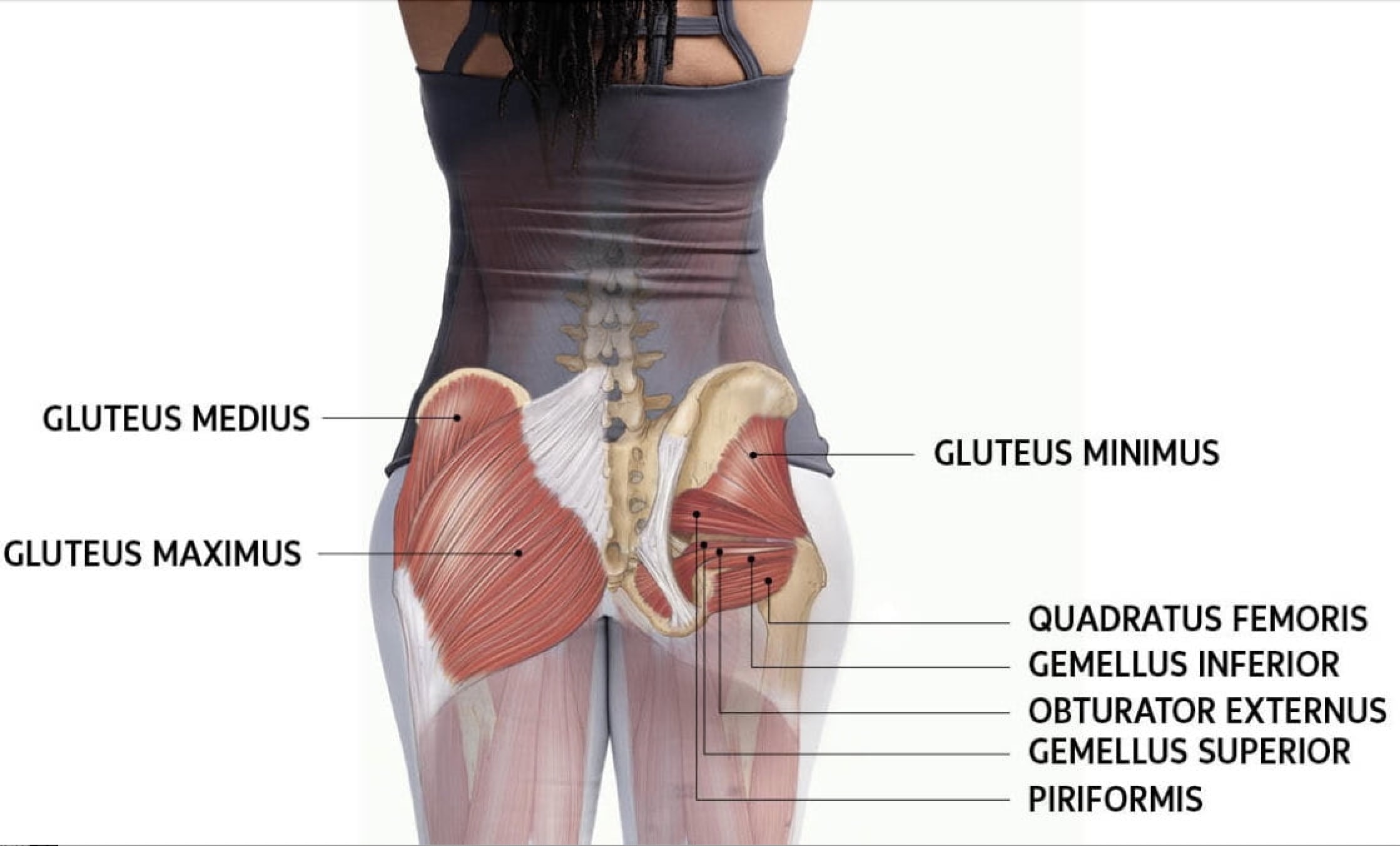
Physiological Benefits: Strengthening the Hips and Stabilizing the Pelvis
- Enhanced Hip Stability: Regular practice of the clam shell exercise strengthens the gluteus medius, which is essential for hip stability. This is particularly important for athletes and individuals engaging in activities that require sudden changes in direction or speed, as well as for everyday activities.
- Improved Pelvic Alignment: By strengthening the muscles around the pelvis, the clam shell exercise helps in maintaining proper pelvic alignment. This is crucial for preventing lower back pain and other musculoskeletal issues that can arise from poor posture and alignment.
- Injury Prevention: The clam shell exercise is often used in rehabilitation settings to prevent injuries related to weak hip abductors, such as iliotibial band syndrome, patellofemoral pain syndrome, and hip bursitis. Strengthening these muscles can reduce the risk of such injuries.
- Better Movement Patterns: Strengthening the hip abductors through exercises like the clam shell can lead to more efficient movement patterns. This includes improved gait in walking and running, as well as enhanced performance in sports that require lateral movements.
- Increased Muscle Endurance: Over time, performing the clam shell exercise can increase the endurance of the hip abductors, allowing individuals to perform activities of daily living and sports with less fatigue and higher efficiency.
Incorporating the Banded Clam Shell Exercise into Your Workout Routine: Enhancing Hip Strength and Stability
Integrating the clam shell exercise into your workout regimen is a strategic move for enhancing hip strength, pelvic stability, and overall physical health. Adhering to best practices for incorporating this effective exercise can maximize benefits, ensuring a balanced and comprehensive fitness routine. Here’s how to seamlessly include the clam shell exercise into your workouts, along with recommendations on frequency and repetitions for optimal results.

Julie’s Tips for Integrating the Clam Shell into a Comprehensive Workout Plan
- Warm-Up Inclusion: Incorporate the clam shell exercise early in your workout routine, ideally during the warm-up phase. This activates the gluteal muscles and prepares the hips and pelvis for more intense physical activity, reducing the risk of injury.
- Pair with Complementary Exercises: Combine clam shells with other lower body exercises that target different muscle groups, such as squats, lunges, and leg presses. This ensures a well-rounded workout that addresses multiple aspects of lower body strength and stability.
- Use as a Recovery Exercise: On rest or recovery days, the clam shell can be a gentle yet effective exercise for maintaining hip mobility and strength without overexerting the muscles.
- Balance Both Sides: Ensure you perform an equal number of sets and repetitions on both sides to maintain muscular balance and symmetry. Imbalances can lead to posture issues and increased injury risk.
- Integrate into Circuit Training: For those engaged in circuit training, the clam shell is an excellent addition to any circuit focused on lower body strength or core stability, enhancing the overall effectiveness of the training session.
Recommended Frequency and Repetitions
- Frequency: Aim to incorporate the banded clam shell exercise into your routine 2 to 3 times a week. This frequency allows for adequate muscle recovery while ensuring consistent strength gains.
- Repetitions and Sets: Begin with 2 to 3 sets of 10 to 15 repetitions per side. As your strength improves, gradually increase the repetitions to 20 per set or consider adding resistance (such as a resistance band) for additional challenge.
- Progression Tips: Once you’re comfortable with the basic clam shell exercise and looking for more intensity, add a resistance band around your thighs or hold a weight like a dumbbell at the top of your thigh. This increases the activation of the hip abductor muscles. Advanced individuals may also explore variations like the weighted clam shell for further progression.
Incorporating the clam shell exercise into your workout routine offers a simple yet highly effective method for strengthening the hips and stabilizing the pelvis, contributing to better posture, improved movement efficiency, and reduced injury risk. By following these best practices and adjusting frequency and repetitions based on your fitness level, you can ensure that this powerhouse exercise becomes a cornerstone of your fitness journey, supporting optimal lower body health and performance.
Frequently Asked Questions (FAQ)
Can the clam shell exercise help with hip pain?
Yes, the clam shell exercise can be beneficial for individuals experiencing hip pain, particularly when the discomfort stems from weaknesses or imbalances in the hip abductors and other surrounding muscles. By strengthening the gluteus medius and minimus, the clam shell exercise can improve hip stability, reduce strain on the hip joint, and alleviate pain. However, it’s crucial to consult with a healthcare provider or physical therapist before starting any new exercise regimen, especially if you’re dealing with chronic pain or specific hip conditions.
How long does it take to see results from doing the clam shell exercise?
The timeline for seeing results from this exercise can vary based on several factors, including the initial strength level, frequency of the exercise, and whether it’s part of a comprehensive workout plan. Generally, individuals may start noticing improvements in hip strength and stability within 4 to 6 weeks of consistent practice. For those incorporating the exercise into rehabilitation programs for injury recovery, noticeable benefits in pain reduction and improved function may be observed within a similar timeframe. Consistency and gradually increasing the challenge (e.g., adding resistance) are key for ongoing progress.
Are there any risks associated with the Banded clamshell exercise?
The clam shell exercise is considered low risk for most people when performed correctly. However, there are a few potential risks to be aware of:
- Overuse Injury: Performing the clam shell exercise with excessive frequency or too many repetitions without adequate rest can lead to overuse injuries or muscle strain.
- Improper Form: Incorrect form, such as rotating the hips or not engaging the core, can reduce the effectiveness of the exercise and potentially cause discomfort or injury. Ensure proper technique or seek guidance from a fitness professional.
- Pre-existing Conditions: Individuals with pre-existing hip or lower back conditions should proceed with caution and consult a healthcare provider to ensure the exercise is appropriate for their specific situation.
The clam shell exercise is a valuable tool for enhancing hip strength and stability, potentially alleviating hip pain, and improving overall function. Results can typically be seen with consistent practice over several weeks. While the exercise is low risk, attention to proper form and consideration of any pre-existing conditions are important for maximizing benefits and minimizing any potential risks.

Research Appendix
Iwashita, Yuki, and Hironobu Kuruma. “Examination of Hip Function and Muscle Activity during Clam Exercise.” Journal of Physical Therapy Science, vol. 35, no. 7, 1 Jan. 2023, pp. 528–532, https://doi.org/10.1589/jpts.35.528. Accessed 4 Oct. 2023.
Jeong, Seom-Gyeul, et al. “Effect of Modified Clamshell Exercise on Gluteus Medius, Quadratus Lumborum and Anterior Hip Flexor in Participants with Gluteus Medius Weakness.” Journal of the Korean Society of Physical Medicine, vol. 14, no. 2, 31 May 2019, pp. 9–19, https://doi.org/10.13066/kspm.2019.14.2.9.
Brandt, Mikkel, et al. “PERCEIVED LOADING and MUSCLE ACTIVITY during HIP STRENGTHENING EXERCISES: COMPARISON of ELASTIC RESISTANCE and MACHINE EXERCISES.” International Journal of Sports Physical Therapy, vol. 8, no. 6, 1 Dec. 2013, pp. 811–819, www.ncbi.nlm.nih.gov/pmc/articles/PMC3867074/.
Macadam, Paul, et al. “AN EXAMINATION of the GLUTEAL MUSCLE ACTIVITY ASSOCIATED with DYNAMIC HIP ABDUCTION and HIP EXTERNAL ROTATION EXERCISE: A SYSTEMATIC REVIEW.” International Journal of Sports Physical Therapy, vol. 10, no. 5, 2015, pp. 573–91, www.ncbi.nlm.nih.gov/pmc/articles/PMC4595911/.

